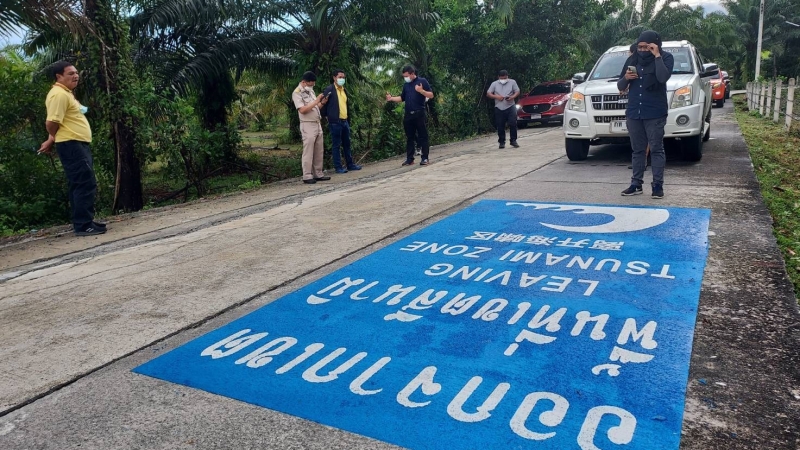Two tsunami-evacuation drills will be held on the island next Wednesday (July 20), Prapan Kanprasang, Director of the Department of Disaster Prevention and Mitigation (DDPM) Region 18 office, based in Phuket, told The Phuket News earlier this week.
One evacuation drill will be held in Rawai, home to Nai Harn Beach, while the other will be held in Sakhu, south of Phuket International Airport, Mr Prapan said.
Details of the exact locations and times of the evacuation drills had yet to be confirmed, Mr Prapan added.
Mr Prapan urged people to have confidence in officials’ ability to warn local residents and tourists at the beaches of any impending tsunami with enough advance time to evacuate risk areas and make it to safety zones.
“We have 19 tsunami-warning towers along the coast in Phuket. In total there are 112 warning towers in coastal areas along the Andaman Coast,” he said.
Officers had been dispatched to test all 19 towers on the island to ensure they are functioning properly. Following an order from the National Disaster Warning Center (NDWC) in Bangkok last week, the towers are now tested at 8am each day by playing the national anthem.
Any towers with sirens found to be playing the national anthem at a less-than-desired volume will be rectified, Mr Prapan said.
Mr Prapan’s call for confidence in the warning system comes as the two tsunami-warning buoys that Thailand has contributed to the Indian Ocean tsunami-warning network remain not functioning.
Station 23461, installed in the Andaman Sea approximately 340km from Phuket, stopped transmitting data on June 9. The buoy is, or was, positioned halfway between the Thai coast and where the underwater earthquakes continued to rattle southeast of the Nicobar Islands last week.
Station 23401, installed in the Indian Ocean a distance of 965km west of Phuket, was discovered on Oct 22 last year to have slipped its mounting and had stopped transmitting data.
The NDWC is responsible for the maintenance and repair of both buoys, and has repeatedly announced that it will launch a mission to repair or replace the buoys in November, during the usual window for repair and maintenance once every two years.
Mr Prapan highlighted that Thailand’s tsunami-warning system relied on the Indian Ocean Tsunami Detection Network, which the NDWC in Bangkok monitored closely.
“There are five channels through which official tsunami warnings are issued. One of them is a direct SMS service to inform the Governor’s Office,” he said.
The others are networks of groups including government officials and members of the public, with some of the groups including amateur radio operators.
The main warning system can issue warnings by cutting across television and radio broadcasts, Mr Prapan added.
The system is set not to activate automatically unless an earthquake of at least 7.8 magnitude is registered. The system can be overridden to issue manually activated warnings, he said.
Local officials have also been dispatched to ensure that tsunami-warning signs and evacuation route signs in their respective areas are in good condition, and that evacuation safety zones are in good, clean and clear condition, ready for use, he added.
“Please do not panic, brothers and sisters. If the need arises, our system will immediately warn you,” Mr Prapan said.
The system will give advance warning of at least 30 minutes up to about 1 hour and 45 minutes, he added.
“Everyone needs to know what to do if something happens, including in which direction you have to flee,” Mr Prapan said.
“Please follow the warning signs or follow the map and rehearse evacuating to higher ground. And most importantly, do not take your luggage with you. Please stay away from the beach areas as far as possible,” he advised.
Mr Prapan also called on people to not heed any posts online that do not cite official government notices or other substantiated sources. “Don’t be fooled by news in the online media that may cause panic with no base and no origin,” he said.
Additional reporting by Eakkapop Thongtub








